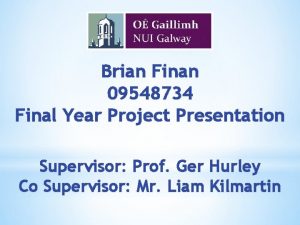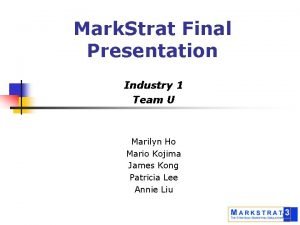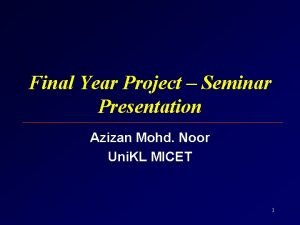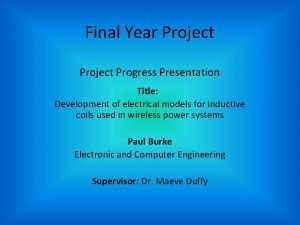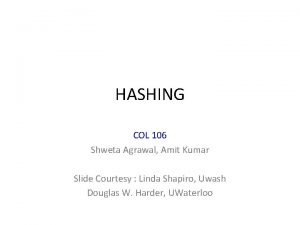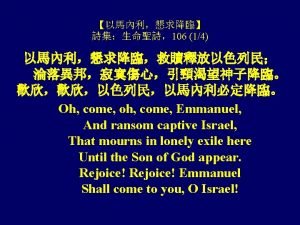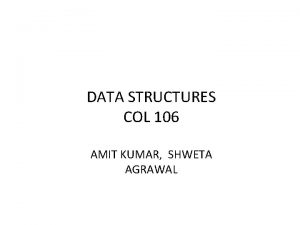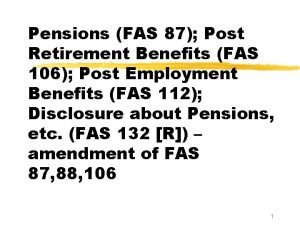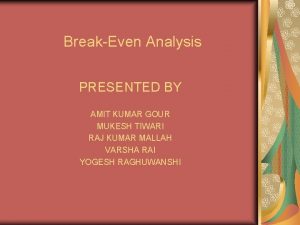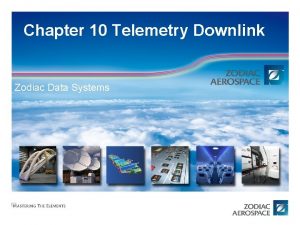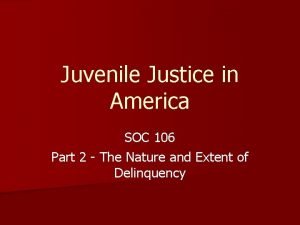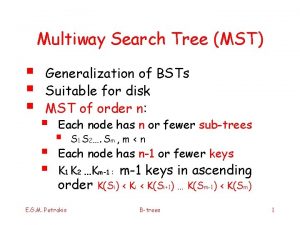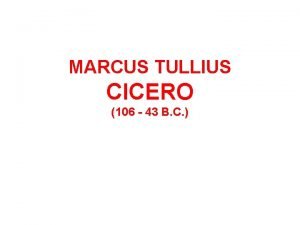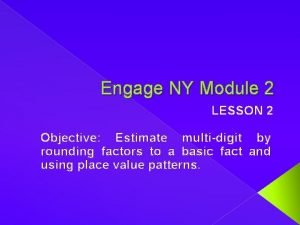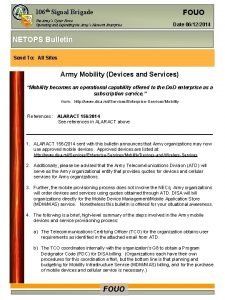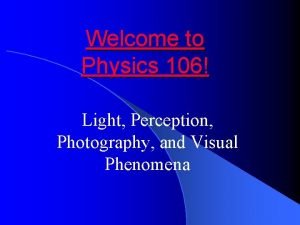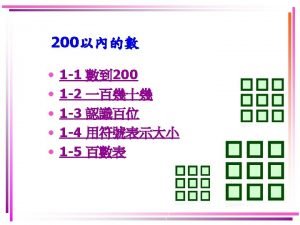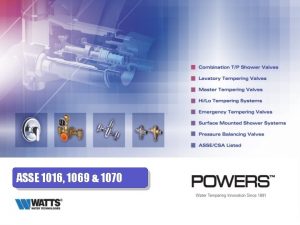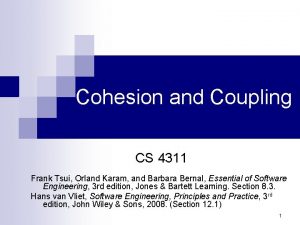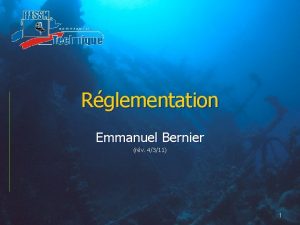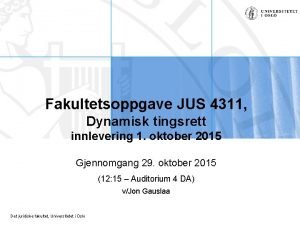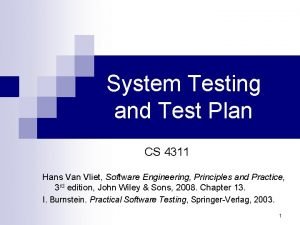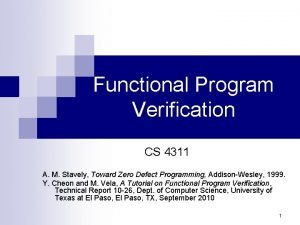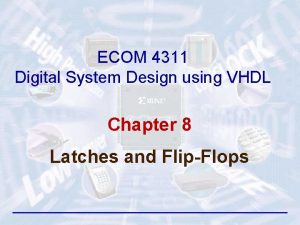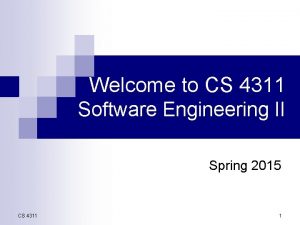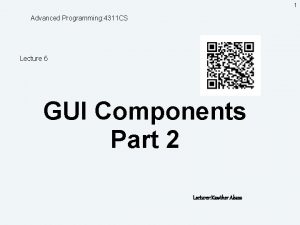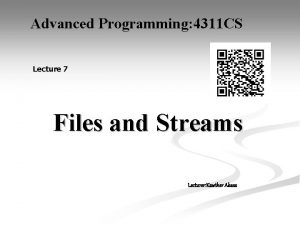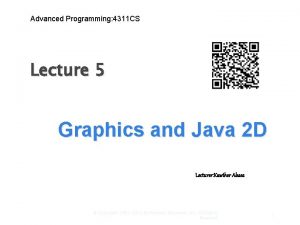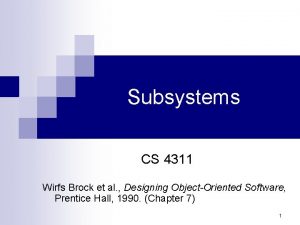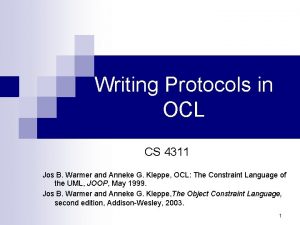ASSE 4311 Asse IIIME 106 Final Presentation 5292017




















- Slides: 20

ASSE 4311 -Asse. III/ME 106 Final Presentation 5/29/2017 Design and Experimental Study on Air-Dehumidification Performance using Supersonic Nozzle Prepared by: #Group: 3 ID Number 201100253 201102784 201201386 201102679 201000974 Member Name Mohammed Alhindi Omar Alnafisi Abdulrahem Alboainain Abdullah Aleisini Bassam Al-Baqawi Advisor Dr. Esam Jassim Co-Advisor Dr. Nader Sawalhi

Outline Design Specifications and Items Selection Present by: Abdullah Aleisini Background Present by: Omar Alnafisi Objectives Present by: Omar Alnafisi Experimental setup, Testing, and Results Present by: Abdullah Aleisini, Mohammed Alhindi and Bassam Al-Baqawi Challenges and Obstacles Present by: Bassam Al-Baqawi Conclusions Present by: Abdulrahem Alboainain

Objectives Test multiple designs for supersonic nozzle and compare the result between them in efficiency and humidity level. Our testing goals are to dehumidify the humidity air below 25% and get separation efficiency above 75%. Solution to dehumidify the natural gas. To examine different sizes of diffusers and investigate their effect on gas-particle interaction.

Background Problem statement: Oil and gas industry- discovering, producing and transporting the natural gas. Throughout these processes, they face a real challenge with natural gas. Natural gas is most often mixed with significant quantities of water and others unwanted solid particles. These unwanted particles can cause many serious problems during expansion process of natural gas: corrosion, excessive pressure drop, hydrate, the decrease of its heating value and the reduction in gas transmission efficiency.

Background Project description: Supersonic nozzle is a reliable technology for oil and gas industry for its compatibility and feasibility. It is employed to overcome the deficit of the traditional method, related to gas dynamics, thermodynamics and fluid dynamics theories. The studies and results showed positive impact on the separation technology due to: 1. 1 -Simplicity in designing 2. 2 -Cost effective in manufacturing 3. 3 -Feasibility in maintenance.

Background Swirling Vanes Nozzle Diffuser Dry Gas Wet Gas Central Body Liquid + Slip Gas Typical Supersonic Nozzle Separator system

Design Specifications and Item Selection Our system will be consist of two subsystems: 1. Supersonic nozzle separator system which consists of ( Nozzle, separator, and diffuser). 2. Test stand system which consists of ( 220 V Air compressor, pressurized tank, pipes, pressure gauge, ball valves, tees, elbow, check valve and water drop let separator).


Design Specifications and Item Selection ITEM NO. PART NUMBER 1 Separator 2 Diffuser 3 Nozzle


Experimental setup • • First, we fill the air pressurized tank with water and turn on the air compressor and wait for the pressure to build up. Second, we open the outlet valve and measure the humidity level from the air compressor and pressurized tank system it should give us from 95% to 100% in order to conduct the experiment. Third, we connect the supersonic nozzle separator system to the air compressor and pressurized tank system. Finally, we open the outlet valve and measure the humidity level from the supersonic nozzle separator system with three different diffusers and note the results.


Testing In the beginning, the test fails because there are some problems such as leaking and low humidity level. We solved the problems by tightening all the pipes and applied Teflon tape on all the fitting and threads to prevent any leaks. In addition, we add rubber gasket between the Nozzle, separator, and diffuser to prevent any further leaks. Our testing goals are to dehumidify the humid air below 25% and get separation efficiency above 75%.

Equations We Used Equation 1 Equation 2 Equation 3 Equation 4

Results The inlet humidity level is about 99%. Diffuser Size Humidity Level Separation efficiency 50 mm Diffuser 18% 76% 70 mm Diffuser 17% 76% 90 mm Diffuser 17% 78% We got the best performance from using the 90 mm diffuser. We reached our goal which is below 25% humidity level and above 75% separation efficiency.

Challenges and Obstacles Throughout this project, there were some difficulties: • • • Problems Problems regard the place to store the system. with other courses’ projects. regard delays in manufacturing our parts. with equipment/components. with changing the final exams date. with troubleshooting of operation the test stand system.

Summary We learned many things and we gained some experience, knowledge, and skills. Working in a group with different members taught us how to get benefits from using many skills, for example, time management, proper communication, teamwork, problemsolving, responsibility, organization, negotiation, troubleshooting and conflict management. Also while working in this project we learned the different function of the nozzle and diffuser. The most important thing that we get the chance to apply the knowledge and experience that we gained from the university.

Conclusion • • In conclusion, this project is about finding a solution to dehumidify the natural gas by using supersonic nozzle separator system. The main focus of this project was to design three diffusers with different length and with the same inlet and exit diameter. We achieved in our study 18% humidity level with 50 mm and 17% humidity level with 70 mm and 90 mm diffusers We contributed to this study by testing the system with three different diffusers and our result was better than the previous group which they achieved 23% humidity level.

Future Recommendations In order to carry on with our study, we recommend to experiment with different diffuser, nozzle and separator dimensions and try to get results lower than 15% humidity level. In addition, we recommend trying a different material, for example, Teflon and plastic. Furthermore, we recommend experimenting with a diffuser length more than 90 mm. In addition, we recommend changing the pressurized tank in the test stand system to a proper one that is not containing a balloon inside it. Finally, we recommend to connect two supersonic nozzle separator system together and try experimenting with it.

Thank You
 Brian finan
Brian finan Senior project presentation template
Senior project presentation template Markstrat final report
Markstrat final report Final presentation slide
Final presentation slide Final year project presentation
Final year project presentation Final year project presentation template
Final year project presentation template Final year project progress report
Final year project progress report Col 106 amit kumar
Col 106 amit kumar 生命聖詩 106
生命聖詩 106 Col 106
Col 106 What is fas 106
What is fas 106 Col 106 amit kumar
Col 106 amit kumar Irig 106 chapter 10 sample data
Irig 106 chapter 10 sample data Soc 106
Soc 106 105 ×106
105 ×106 Marcus cicero death
Marcus cicero death Round the factors and estimate the products 656 x 106
Round the factors and estimate the products 656 x 106 Error n 106
Error n 106 106 signal brigade
106 signal brigade Physics 106
Physics 106 101 102 103
101 102 103
